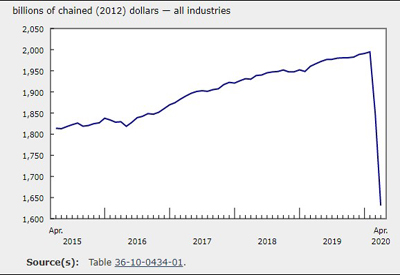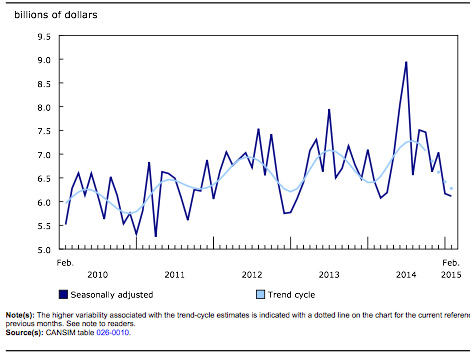Human Capital: The Last Piece of the Workforce Productivity Puzzle

Apr 15, 2019
By Bill Howatt, Jesse Adams and Mike Roberts
Workforce productivity can be defined as the amount of services or goods a workforce produces within an expressed time and budget. Senior leaders, when setting their expectations and measures for organizational success, must factor in workforce productivity with respect to what influences it both positively and negatively. If this is not done, the risk for failure intensifies.
When designing budgets, senior leaders typically want to understand the measurable impact of any investment or disinvestment on the workforce, and the expected impact workforce productivity will have on financials. The absence of this information often can often delay or even prevent action.
Employee engagement has typically been the go-to metric to measure workforce productivity through job satisfaction. However, if this metric is not connected to organizational key performance indicators (KPIs) such as customer index, absenteeism, disability, turnover, and financial results, then what is the true benefit with respect to understanding how engagement is impacting productivity?
For example, company ABC’s engagement rate of 72% moved to 77% in the past 12 months. What does this really mean? Though this 5% increase may net a manager a bonus, without clear evidence of the links between the engagement score and other key metrics it is difficult to determine the impact. For many organizations under examination, this is often a gap.
The gaps in measuring workforce productivity have led Morneau Shepell to look beyond engagement to measure the relationships between health, engagement and productivity. By examining this link between employees’ key performance behaviours (KPBs) and financial results, leaders are in a position to accurately predict the behaviours that positively or negatively impact productivity.
In Morneau Shepell’s white paper The next evolution of strategic HR: Measuring program value through business results we introduced a new line of thinking around strategic HR. This white paper also introduced the role and importance of key performance behaviours for driving key performance indicators (KPIs).
Additionally, we introduced our approach for measuring programs’ impacts with respect to how they can positively shape KBPs. The measurement model introduced is based on our methodology for calculating the value of investment (VOI) and the impact on workforce productivity.
Ultimately, workforce productivity is defined by the sum of every employee’s individual contribution. The total collective effort of the employee base defines the human capital workforce productivity contribution factor. No two human beings have the same capacity, needs and motivation, and as such, the complexity for influencing human capital increases. Simply put, there is no silver bullet. There is not one single policy, procedure or program that will solve the challenge of how to get the most out of every FTE with respect to productivity.
Most senior leaders have seen dollars wasted on random acts of wellness and other types of programs that have not had any major long-term effect, nor reached those who, in particular, have low productivity due to health or motivation factors. As a result, there may be a degree of scepticism or conservative thinking with respect to investing in human capital health and engagement to drive productivity. In fairness, they are looking for the evidence and the link between their investment and improved productivity.
Senior leaders will invest heavily in workforce productivity when they believe that there will be a real measureable return on the investment. Many leaders will not even consider an investment without seeing demonstrated case studies with results provided by other organizations.
The IT revolution has driven big investments with the hope that new, powerful IT solutions will improve workforce productivity. Interestingly, the impact of technology advancements in the workplace on human capacity were not thought out or anticipated. For example, the evolution of handheld devices brought with it an expectation of the 24/7 workplace, resulting in many employees feeling that they are chained to email. For them, IT has increased their perceived workload, the length of their workday, and the weight of a real or perceived continuous demand on their time and energy.
Even with this knowledge and insight, IT continues to roar on. Organizations have invested billions, if not trillions, of dollars in IT to upgrade ERP and HRIS systems. With all the IT advancements in infrastructure, software, Internet, robots, and the evolution of the cloud, the common goal was to maximize workforce productivity. Perhaps a crude way to put it: how can organizations maximize their dollars so they can do more with less human capital? Why? Human capital is often viewed as expensive, complex, and hard to manage and maintain over the long term. Regardless, there will never be enough IT to remove all people.
Organizations need people in order to exist.
Another area senior leaders have invested in heavily is reducing waste, driving efficiencies, and increasing workforce productivity through process mapping and improved documentation. As with significant investments in IT, organizations have invested billions of dollars in process management systems such as six sigma and ISO.
In addition to these hard advancements there have been changes in governance related to how human capital should be managed in order to positively impact the employee contribution, workplace experience and overall workforce productivity. For example, there has been a growth in the emphasis and commitment put on employees’ physical and psychological safety, such as occupational health and safety (OHS), workers compensation, human rights, and the National Standard of Canada for Psychological Health and Safety in the Workplace (the Standard). These are collectively influencing decision-makers with respect to policies (e.g., mental health policy), procedures (e.g., harassment investigation), programs (e.g., EAFP, depression care and PTS support) and benefits plans (e.g., psychological service support).
The link between employees’ health, engagement and productivity is becoming more and more evident. This is why Morneau Shepell, in partnership with The Globe and Mail, has created a new employer of choice award to add to this growing conversation. Promoting and supporting the benefits of employees’ total health on productivity through early prevention and detection of chronic physical and mental health conditions can help decrease the associated hard costs (e.g., absence, STD/LTD/WCB, and drug costs) on an organization’s bottom line.
There is no getting around it: business needs people
One last piece that will define workforce productivity is human capital. How successful an organization is at managing and influencing its employees is a critical element for predicting how effective and engaged the workforce is. Leadership that wants to effectively engage its workforce must pay attention to how their actions or lack of actions positively or negatively impact workforce productivity.
For example, Sam is a typical office worker who specializes in IT. He works from 9 am to 5 pm, has 60 minutes for lunch, and takes two 20-minute breaks. His active expected productivity is 380 minutes per day.
If managing people were only this easy. To influence workforce productivity is to understand what factors positively and negatively affect Sam’s workplace experience. Sam’s perceptions of his workload expectations have resulted in Sam feeling stressed and worried about his current work demand.
Like most employees, the longer Sam experiences stress without relief, the higher the risk that his productivity will be negatively impacted. That can be costly, because his inability to cope with stress may result in increased presenteeism and absenteeism.
Many internal and external factors influence Sam’s productivity. Yes, Sam has 380 minutes to be productive each day, but unlike a software program that runs the same way every time, each person is different. Employees can become distracted by the words their manager says, events that are happening at home, or internal conversations such as self-talk about their job satisfaction.
Indeed, employees have many intangible factors that come into play and collectively influence their contributions. Below are eight factors that provide a view as to how complex human capital workforce productivity can be to influence. These factors that strategic HR plans target include:
• knowledge
• skills
• motivation
• health
• link to value chain
• manager-employee relationship
• culture
• employee fit
How Sam perceives and navigates the above eight factors will shape and influence his work productivity. To make the point, consider a scale of 1 to 10, with a maximum score of 80, Sam’s score for each of the factors. A score of 30 would suggest that with more support and competencies Sam has potential for much higher productivity. Now consider a workforce of 1,000 employees, each with their own score. This perhaps is why workforce productivity with respect to influencing human capital workforce productivity is so complex. With so many variables at play, there is seldom one easy answer.
Employees are, indeed, expensive. The biggest-ticket item on most P&Ls is payroll, along with the additional costs that come with people, such as benefits, pension contributions, office space, equipment, supervision and training.
Read on to learn about Morneau Shepell’s Total Integrated Health Consulting approach, a structured approach organizations can take that is flexible enough to adapt to their needs.
Bill Howatt is Chief of Research and Development, Workforce Productivity for Morneau Shepell; Rochelle Morandini, Partner, Health Consulting; Jesse Adams, Health Consultant. Mike Roberts is Chief Human Resources Officer, Emera.
Image: rawpixels.com at Pexels











